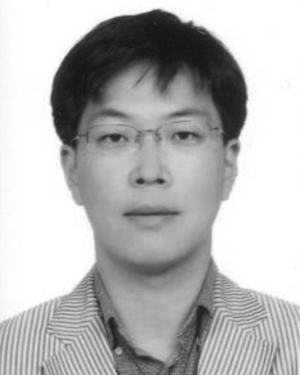Abstract:
High mechanical impedance, sensor resolution, and computing bandwidth are desirable for achieving stability in feedback control. In contrast, although the human body is p...Show MoreMetadata
Abstract:
High mechanical impedance, sensor resolution, and computing bandwidth are desirable for achieving stability in feedback control. In contrast, although the human body is physically inferior to man-made systems in terms of feedback control due to signal transmission delay, humans can achieve not only stable but also robust and adaptive control ability. For these reasons, the significance of the feedforward control of the human has been emphasized in neuroscience. In previous studies, virtual trajectory control and internal model hypotheses were used to explain the principle of human feedforward control in view of the mechanical stiffness of joints and the internal model of the brain, respectively. Inspired by these insights, in this paper, we focus on the relationship between the joint stiffness and inverse model accuracy and attempted to apply it to the field of robotics. We present a variable stiffness actuator developed using variable radius gear transmission inspired by muscle cross-bridge kinematics. The developed mechanism allows the joint stiffness to be accurately controlled without any sensor-based feedback control. Using the developed actuator, we conduct a feedforward motion generating experiment with respect to variations in the inverse dynamics model uncertainty and verified that joint stiffness can compensate for inverse model uncertainty and external disturbances. These results indicate that the developed variable stiffness actuator can be applied to the robotics field for feedforward applications and support the hypothesis that humans may utilize joint stiffness to compensate for the inverse dynamics model uncertainty.
Published in: IEEE Transactions on Robotics ( Volume: 35, Issue: 3, June 2019)
Funding Agency:

Korea Advanced Institute of Science and Technology, Daejeon, Korea
Handdeut Chang received the B.S. and M.S. degrees from the Department of Mechanical Engineering, Osaka University, Osaka, Japan, in 2011 and 2013, respectively, and the Ph.D. degree in mechanical engineering from the Korea Advanced Institute of Science and Technology (KAIST), Daejeon, Korea, in 2019.
His research interests include biomimetic robotics, variable impedance actuator, nonlinear control, physical human robot int...Show More
Handdeut Chang received the B.S. and M.S. degrees from the Department of Mechanical Engineering, Osaka University, Osaka, Japan, in 2011 and 2013, respectively, and the Ph.D. degree in mechanical engineering from the Korea Advanced Institute of Science and Technology (KAIST), Daejeon, Korea, in 2019.
His research interests include biomimetic robotics, variable impedance actuator, nonlinear control, physical human robot int...View more

Korea Advanced Institute of Science and Technology, Daejeon, Korea
Sangjoon J. Kim received his B.S. degree in electrical and computer engineering from the Department of Electrical and Computer Engineering, University of Wisconsin, Madison, USA, in 2012, and the M.S. degree in mechanical engineering in 2014 from the Korea Advanced Institute of Science and Technology (KAIST), Daejeon, Korea, where he is currently working toward the Ph.D. degree in mechanical engineering.
His research inter...Show More
Sangjoon J. Kim received his B.S. degree in electrical and computer engineering from the Department of Electrical and Computer Engineering, University of Wisconsin, Madison, USA, in 2012, and the M.S. degree in mechanical engineering in 2014 from the Korea Advanced Institute of Science and Technology (KAIST), Daejeon, Korea, where he is currently working toward the Ph.D. degree in mechanical engineering.
His research inter...View more

Korea Advanced Institute of Science and Technology, Daejeon, Korea
Jung Kim received his B.S. and M.S. degrees in mechanical engineering from the Department of Mechanical Engineering, Korea Advanced Institute of Science and Technologies (KAIST), Korea, in 1991 and 1993, respectively, and the Ph.D. degree in mechanical engineering from the Massachusetts Institute of Technology (MIT), Cambridge, MA, USA, in 2003.
He is currently a Professor in the Department of Mechanical Engineering, KAIST...Show More
Jung Kim received his B.S. and M.S. degrees in mechanical engineering from the Department of Mechanical Engineering, Korea Advanced Institute of Science and Technologies (KAIST), Korea, in 1991 and 1993, respectively, and the Ph.D. degree in mechanical engineering from the Massachusetts Institute of Technology (MIT), Cambridge, MA, USA, in 2003.
He is currently a Professor in the Department of Mechanical Engineering, KAIST...View more

Korea Advanced Institute of Science and Technology, Daejeon, Korea
Handdeut Chang received the B.S. and M.S. degrees from the Department of Mechanical Engineering, Osaka University, Osaka, Japan, in 2011 and 2013, respectively, and the Ph.D. degree in mechanical engineering from the Korea Advanced Institute of Science and Technology (KAIST), Daejeon, Korea, in 2019.
His research interests include biomimetic robotics, variable impedance actuator, nonlinear control, physical human robot interaction, and myoprocessor.
Handdeut Chang received the B.S. and M.S. degrees from the Department of Mechanical Engineering, Osaka University, Osaka, Japan, in 2011 and 2013, respectively, and the Ph.D. degree in mechanical engineering from the Korea Advanced Institute of Science and Technology (KAIST), Daejeon, Korea, in 2019.
His research interests include biomimetic robotics, variable impedance actuator, nonlinear control, physical human robot interaction, and myoprocessor.View more

Korea Advanced Institute of Science and Technology, Daejeon, Korea
Sangjoon J. Kim received his B.S. degree in electrical and computer engineering from the Department of Electrical and Computer Engineering, University of Wisconsin, Madison, USA, in 2012, and the M.S. degree in mechanical engineering in 2014 from the Korea Advanced Institute of Science and Technology (KAIST), Daejeon, Korea, where he is currently working toward the Ph.D. degree in mechanical engineering.
His research interests include wearable robotics, physical human robot interaction, magnetic resonance (MR)-compatible robots and rehabilitation robotics.
Sangjoon J. Kim received his B.S. degree in electrical and computer engineering from the Department of Electrical and Computer Engineering, University of Wisconsin, Madison, USA, in 2012, and the M.S. degree in mechanical engineering in 2014 from the Korea Advanced Institute of Science and Technology (KAIST), Daejeon, Korea, where he is currently working toward the Ph.D. degree in mechanical engineering.
His research interests include wearable robotics, physical human robot interaction, magnetic resonance (MR)-compatible robots and rehabilitation robotics.View more

Korea Advanced Institute of Science and Technology, Daejeon, Korea
Jung Kim received his B.S. and M.S. degrees in mechanical engineering from the Department of Mechanical Engineering, Korea Advanced Institute of Science and Technologies (KAIST), Korea, in 1991 and 1993, respectively, and the Ph.D. degree in mechanical engineering from the Massachusetts Institute of Technology (MIT), Cambridge, MA, USA, in 2003.
He is currently a Professor in the Department of Mechanical Engineering, KAIST.
His current research interests include medical robotics, haptics, biomechanical signals, and assistive robotics.
Jung Kim received his B.S. and M.S. degrees in mechanical engineering from the Department of Mechanical Engineering, Korea Advanced Institute of Science and Technologies (KAIST), Korea, in 1991 and 1993, respectively, and the Ph.D. degree in mechanical engineering from the Massachusetts Institute of Technology (MIT), Cambridge, MA, USA, in 2003.
He is currently a Professor in the Department of Mechanical Engineering, KAIST.
His current research interests include medical robotics, haptics, biomechanical signals, and assistive robotics.View more


